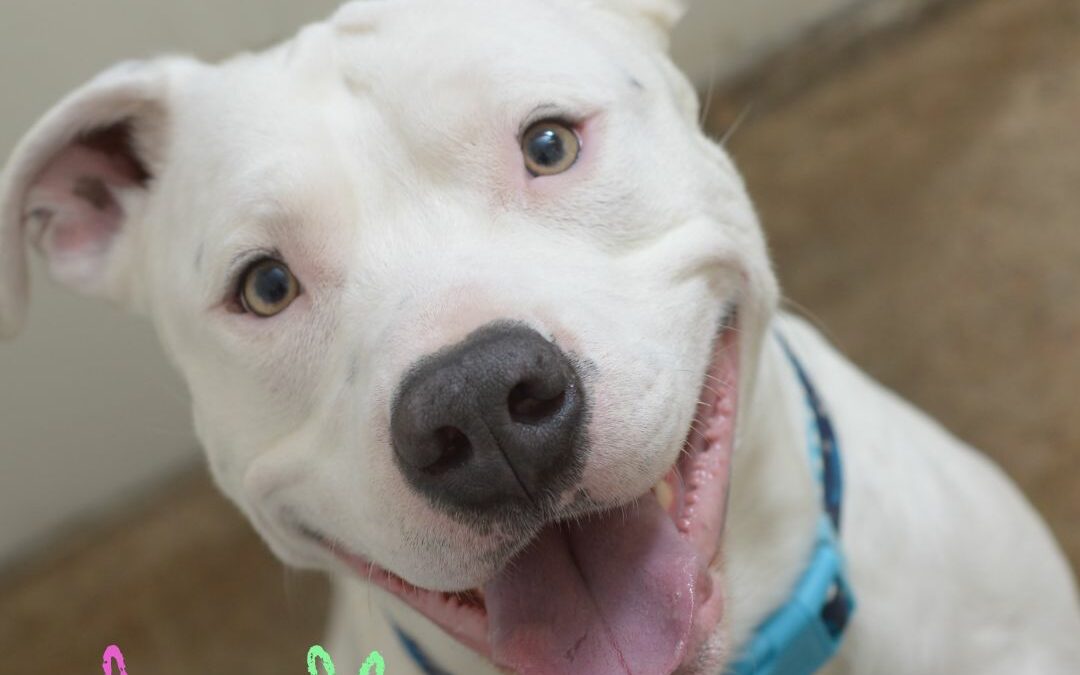There are a lot of special needs pups out there looking for homes. And of course, sometimes these needs come on with age. Either way, if you are living with a deaf dog, there are some key tips and tricks to make your life and their life just as full as it would be without this difference.
To start, let’s look at some myths about deaf dogs and then we’ll get to some tips for living with a deaf dog.
Most common myths about deaf dogs
Myth: Deaf dogs don’t bark.
Not true. They bark. And they may bark just as much if not more than hearing dogs. They do bark differently since they can’t hear themselves.
Myth: Deaf dogs are more aggressive.
Again, not true. It makes sense that people would assume that a dog without one of its senses would be more aggressive because we assume they feel more fear. But this is not the case. According to some studies, deaf dogs are actually more likely to be less aggressive.
Myth: There’s no reason to speak to a deaf dog since they can’t hear you.
Dogs – and especially deaf dogs – are expert body language readers, including the faces you make. Your body language and face say a lot when you are talking. So not talking to them is taking away this method of communicating with your deaf dog and it is not going to help anyone.
Tips for living with a deaf dog
Identifying your deaf dog as deaf
When you’re out and about with your dog, it can be a good idea to tag your dog as deaf. This increases awareness in general, but it also alerts people that your dog might not react the way they expect. You could do a simple tag on their collar or even have them wear a vest that says they are deaf.
Learn some sign language
Or create modified versions of sign language. Check here and here for some resources.
It’s really important that you start this as early as possible. And even if you have a hearing dog, it can be smart to incorporate hand signals just in case they lose their hearing with age.
Be their ears
Since your dog can’t hear, it’s extra important that you be really attentive to the sounds in your environment. Especially when you’re out walking. Listen carefully for any sounds of aggression from other dogs, for example. Listen to the traffic. Listen for anything that might frighten them (as in, they can’t hear so they won’t notice something or someone coming at them until it’s right there).
Enhance their other senses
Like a human who has one less sense, a deaf dog’s other senses will be heightened. And considering how extraordinary their sense of smell already is, this is saying a lot. (You can read about your dog’s awesome nose here.)
To enhance their other senses and provide them with this stimualation, you could think about the smells in your home. Feed them extra fresh food. Allow them extra sniff time on their walks.
Be extra attentive to interactions with other dogs
Dogs will not understand that your dog is deaf. They can usually tell that something is off, but of course, they don’t understand what. This can create possibly dangerous issues in interactions with other dogs who are not used to your deaf dog’s decreased or lack of responses.
Stay in their sight line
Always approach your dog from an angle that they can see you. Try not to walk up behind them. You don’t want to startle them.
Overall, remember that living with a deaf dog is a lot like living with a hearing dog. Your deaf dog needs the same attention, love, and positive reinforcement. Maybe even a bit more.

